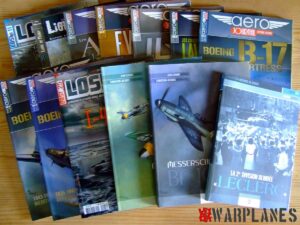Curtiss SOC Seagull
The Curtiss SOC Seagull was an American single radial engined scout observation aircraft produced by Curtiss-Wright Corporation for the United States Navy. The aircraft served on battleships and cruisers in a seaplane configuration, being launched by catapult and recovered from a sea landing. The wings folded back against the fuselage for storage aboard ship. When based ashore or on carriers the single float was replaced by fixed wheeled landing gear.

Curitss Seagull used most of the camouflage pattern seen in US NAVY and in very start of its service metal was painted gray and the fabric was painted aluminum. The tail surfaces were painted lemon yellow (New York, BB-34; Arkansas, BB-33 & Texas, BB-35 (VO-5) and the section color for the number 8 a/c was true blue on the top of the engine cowling. The neutrality patrol star on the forward area is correct for 1940. The official directive for applying the neutrality patrol star for the SOC-1, -2 -3 and the SON-1 aircraft was to center a 2′ diameter star on the engine accessory cowling with the upper circumference about 5″ below the top of the cowling. This was listed in the 19 March 1940 Bureau of Aeronautics Directive AER-E-255-HY,QW-19,F-39-1, Technical Note 6-40.
The blue gray over light gray color is for the next period. The red & white tail stripes, 7 red and 6 white, horizontally applied by the new directive of 5 January 1942. The national insignia, 4 on the wings two on the top and two on the bottom and 1 on each side of the fuselage, were ordered on 5 January 1942 also. The directive was: Aer-E-2571-BP, F39-5, VV,FF-12, 001085. Diameters were different for each particular aircraft. Some national insignia were applied in huge diameters on the wings and fuselage, some were not. Most squadrons used black for the applications of their fuselage codes. The USS Lexington, CV-2 kept the old color, white, for their fuselage codes through to the sinking of the ship on 8 May 1942. Photo evidence bears this out. Last camouflage pattern were Non Specular Sea Blue, Intermediate Blue and White.
Srećko Bradić















Re the caption for the SOC – it is not aircraft #8, but rather aircraft #6. The SOC units assigned to heavy cruisers had four-aircraft sections (one section per ship), which meant aircraft in the first section (1-2-3-4) used the color red for fuselage stripes (for the leader), wing chevron and cowl markings. The second section (5-6-7-8) used white, the third blue. The section leader’s aircraft had the fuselage stripe and the full cowl in the section color. The second aircraft: same color chevron but no fuselage stripe and only the top half of the cowl in the section color. Third aircraft the same except the bottom of the cowl in the section color. The fourth aircraft was like #2 and #3, but the section color was a 12 inch stripe on the top and the bottom of the cowl. The heavy cruiser units also had the aircraft number in the section color underneath each bottom wing, the only units in the yellow-wing Navy that did this.
Thanks!
The caption should read SOC-1 of VCS11 (11-S-6)
Thanks Paul